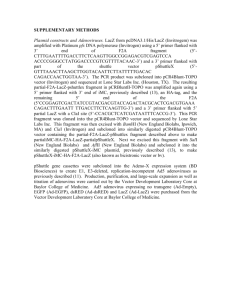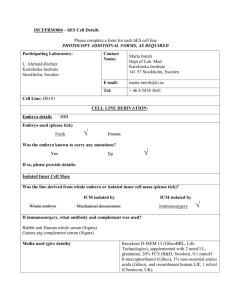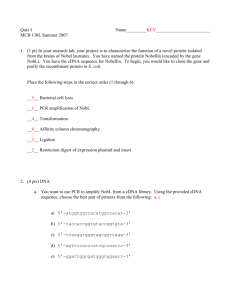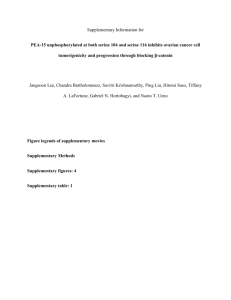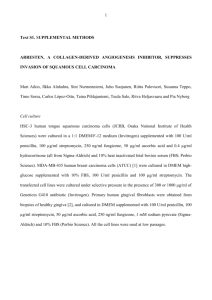Word file (24 KB )
advertisement
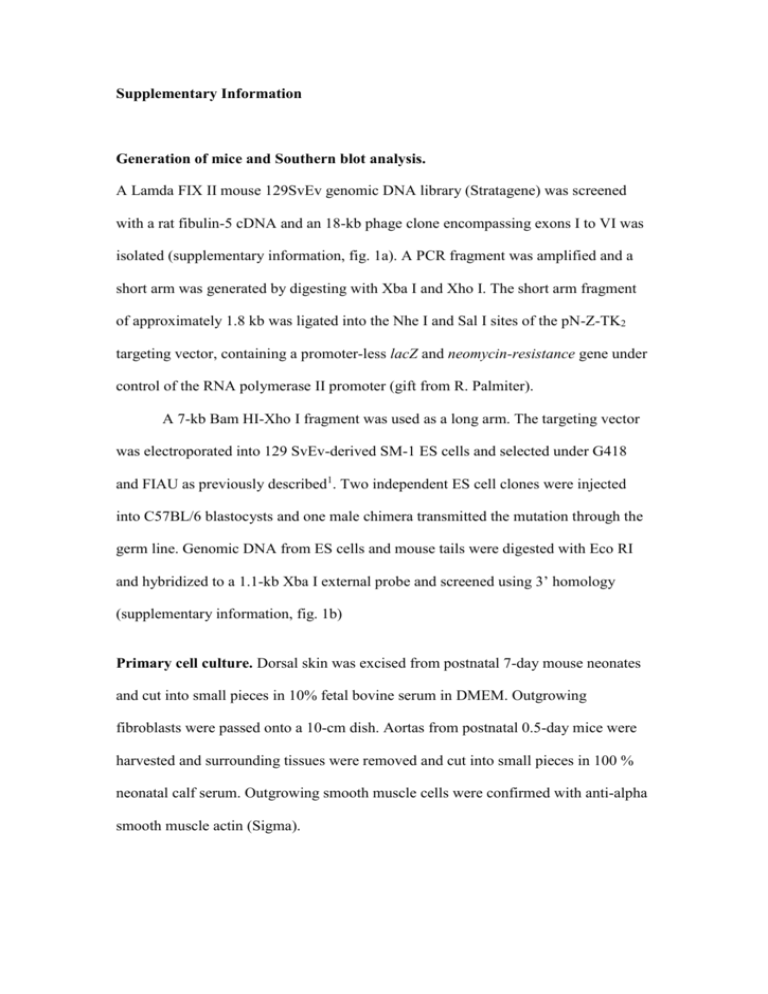
Supplementary Information Generation of mice and Southern blot analysis. A Lamda FIX II mouse 129SvEv genomic DNA library (Stratagene) was screened with a rat fibulin-5 cDNA and an 18-kb phage clone encompassing exons I to VI was isolated (supplementary information, fig. 1a). A PCR fragment was amplified and a short arm was generated by digesting with Xba I and Xho I. The short arm fragment of approximately 1.8 kb was ligated into the Nhe I and Sal I sites of the pN-Z-TK2 targeting vector, containing a promoter-less lacZ and neomycin-resistance gene under control of the RNA polymerase II promoter (gift from R. Palmiter). A 7-kb Bam HI-Xho I fragment was used as a long arm. The targeting vector was electroporated into 129 SvEv-derived SM-1 ES cells and selected under G418 and FIAU as previously described1. Two independent ES cell clones were injected into C57BL/6 blastocysts and one male chimera transmitted the mutation through the germ line. Genomic DNA from ES cells and mouse tails were digested with Eco RI and hybridized to a 1.1-kb Xba I external probe and screened using 3’ homology (supplementary information, fig. 1b) Primary cell culture. Dorsal skin was excised from postnatal 7-day mouse neonates and cut into small pieces in 10% fetal bovine serum in DMEM. Outgrowing fibroblasts were passed onto a 10-cm dish. Aortas from postnatal 0.5-day mice were harvested and surrounding tissues were removed and cut into small pieces in 100 % neonatal calf serum. Outgrowing smooth muscle cells were confirmed with anti-alpha smooth muscle actin (Sigma). Western blot analysis. Whole-kidney extracts were prepared using a polytron in TPERTM Tissue Protein Extraction Reagent (Pierce) containing 1 x protease inhibitor (Roche). Sixty g of protein was separated by 8% SDS-PAGE and transferred to a PVDG membrane. For supernatant preparation, 500 l of culture grown in serum-free media overnight was collected and precipitated with acetone. Western blot analysis with kidney extracts and culture supernatants was performed with UT65 (1:200) and BSY1923 (1:200), respectively, as primary antibodies. Donkey anti-rabbit IgG (H+L) (1:5000, Amersham) was used as a secondary antibody. Signals were detected using a chemiluminescence detection kit (Santa Cruz) and exposed to Kodak X-ray film. Production of recombinant fibulin-5 protein Rat fibulin-5 coding region and 186 bp of 5’ UTR was amplified by PCR, and cloned into the pcDNA5/FRT/V5-His-TOPO vector (Invitrogen). An expression vector encoding flp recombinase (pOG44, Invitrogen) and pcDNA5/FRT/fibulin-5-V5-His vector were co-transfected into Flp-InTM-CHO cells (Invitrogen) by Fugene 6 (Roche) and selected under hygromycin (100 g/ml) for 10 days. One liter of serum-free media containing secreted fibulin-5 protein was loaded onto a nickel column (ProBondTM Resin, Invitrogen), and eluted with 200 mM imidazole. The peak fractions were collected and loaded onto a desalting column (Pierce), and recombinant fibulin-5 was recovered and confirmed by western blot analysis. References 1. Yanagisawa, H. et al. Dual genetic pathways of endothelin-mediated intercellular signaling revealed by targeted disruption of endothelin converting enzyme-1 gene. Development 125, 825-36 (1998).
